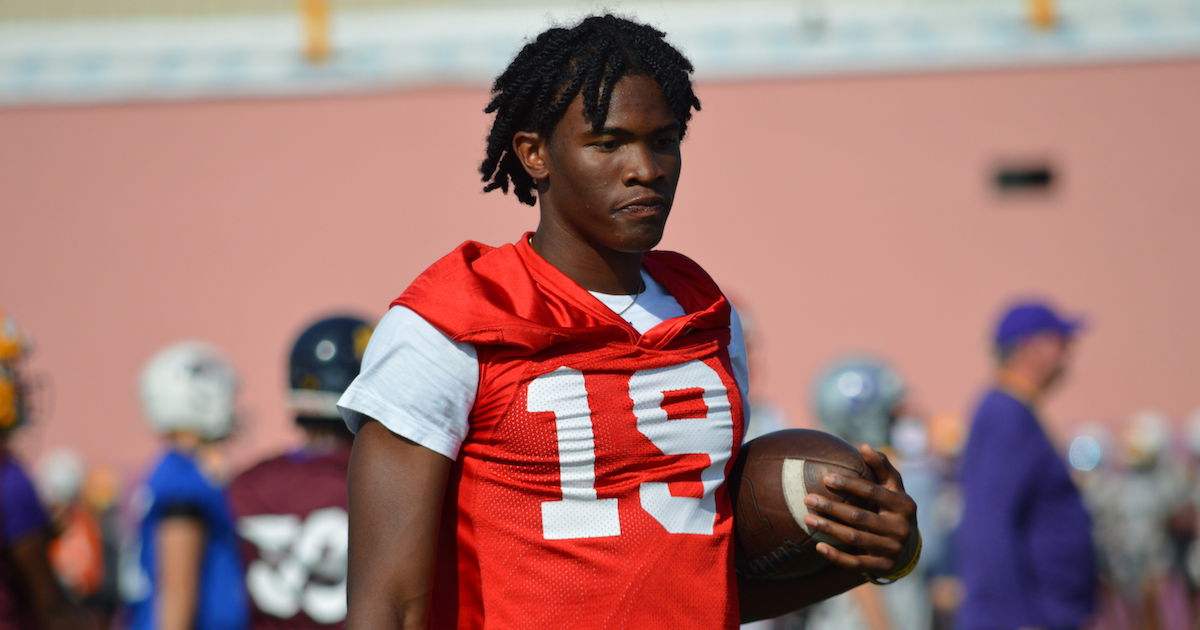
Imago
Credits: Twitter

Imago
Credits: Twitter
Michigan’s Week 2 clash with Oklahoma was a harsh reality check. And guess what? The Wolverines’ offense took a serious blow in the process. The final score, a 24-13 loss, barely tells the story of how much Michigan’s offense struggled to find its footing. Freshman QB Bryce Underwood, who had looked sharp the week before, clearly felt the pressure. He completed less than half of his passes and was rarely given a clean pocket. Well, thanks largely to an Oklahoma defensive front that dominated the trenches. With all this offensive chaos on the field, fans and analysts alike couldn’t help but start questioning the hefty $4.5 million investment Michigan made in Chip Lindsey, the new offensive coordinator.
Watch What’s Trending Now!
With 27 years of coaching under his belt, Lindsey brought a track record that got the Wolverines hyped for a new offensive chapter. Michigan expected him to be the answer to their passing woes. But that didn’t happen. And the first one to question this marriage was Fox Sports’ lead College Football analyst, Joel Klatt. His take on the Wolverines’ offensive line was pretty eye-opening. But not in a good way. “I did not think that the offensive line played well,” Klatt stated on his show. “There were a lot of glaring mistakes from the offensive line, and that’s clearly not the offensive line that they had in 22 and 23, and certainly not even last year in 24.” The identity took a hit when the Wolverines faced the Sooners.
Michigan’s offensive line used to be the stuff of legends. The secret sauce? Michigan had a smart rotation system that kept its offensive line fresh and battle-tested, even as players moved in and out of starting roles. The 2024 roster, for instance, had projected starters like Myles Hinton at left tackle, Greg Crippen snapping the ball at center, and Giovanni El-Hadi and Andrew Gentry holding down the right side. That’s experience you can’t fake. But then the 2024 team replaced all five starters from the year before. And the top six guys in snap count had left for the pros. Well, the effect of that exodus is still visible in the 2025 season. And oh man, that showed up loud and clear against Oklahoma.
ADVERTISEMENT

ADVERTISEMENT
Their protection breakdowns weren’t just a few scattered blips; it was a consistent headache for Freshman QB Bryce Underwood, who found himself under pressure way too often. “When you get behind, you make second-and-longs, third-and-longs, and (drives) are harder to convert,” Michigan coach Sherrone Moore said. “When you’re in those situations, it’s hard on third down to really convert to get that first down. That was part of it.” Against Oklahoma, those long-yardage calls showed up a lot. The Wolverines struggled to pick up consistent chunks, forcing Underwood into more mid-range and deep attempts. “I didn’t love the game plan from Chip Lindsey, the new offensive coordinator,” Klatt said.
“This marriage of Chip Lindsey, who is, and I’m going to try to choose my words carefully here, spread-oriented. And has been maybe a bit more of, let’s just call it, more finesse than Michigan has been in the past.” Klatt continues, “And, namely, the side-to-side offense, the screen offense that you saw that has been brought from Chip Lindsay.” Those quick, short screen passes Lindsey rolled out worked like a charm against New Mexico in Week 1. They kept the offense ticking, allowed Bryce Underwood to get the ball out quickly, and opened up some breathing room. But against Oklahoma? Man, that script got flipped. They weren’t just sitting back; they were attacking aggressively, sniffing those screens out, and dominating the line of scrimmage.
ADVERTISEMENT
Plus, Michigan’s struggles to pick up yards on those early downs really piled on the problems. The Wolverines’ offense was facing third downs where they needed an average of 8.4 yards just to stay alive. Now, that’s a tough ask for any offense. This meant defenses locked down Chip Lindsey’s playbook, which likely mixes screens, runs, and quick passes to keep them guessing. Despite that, Bryce Underwood was definitely hustling out there. But going 9-of-24 for just 142 yards wasn’t exactly the stat line Michigan fans wanted to see.
It’s not just Chip Lindsey’s fault
The offensive line was already struggling with communication and execution, and then Giovanni El-Hadi’s injury hit—like the last straw on Michigan’s battered front. When he went down, things went from bad to worse for the Wolverines. But the troubles didn’t stop there. Marlin Klein, who’s been one of Michigan’s most reliable targets, especially as a tight end, wasn’t available against Oklahoma.
ADVERTISEMENT
Klein’s absence hit hard because he’s the go-to guy who takes the pressure off young quarterback Bryce Underwood. Then there’s the lack of rhythm. “We didn’t get the rhythm we needed to; didn’t get the quarterback in a rhythm like we needed to,” Moore said. “And that’s everybody. That’s not just one person; that’s not just the calls. It’s the execution. We’ve just got to be better.” Part of that was due to the pressure Oklahoma was applying.
But part of it was also the absence of key players and the offensive line’s struggles. But the Wolverines did manage to flash some sparks. Justice Haynes delivered one of the standout moments with a 75-yard touchdown run right at the start of the second half, reminding everyone why Michigan invests so much in its running game. Haynes did hit some big ones—like Donaven McCulley with three grabs for 91 yards and Channing Goodwin for 25—but outside of those, there was a whole lot of nothing.
Top Stories
Cam Newton Makes NFL Return Conditions Clear to 32 Teams as Panthers Legend Confirms Retirement Stance

Tom Brady Makes Career Announcement for Vegas as Pete Carroll Addresses Losing Raiders Locker Room

Scottie Scheffler Makes Critical Health Announcement After He Ended PGA Tour Hiatus

J. J. McCarthy Awaits Punishment From Vikings After Rejecting Kevin O’Connell’s Instructions

Tiger Woods & Co. Now Have to Think Twice Before Trash-Talking at TGL Following New Update

Lexi Thompson Branded ‘Self-Centered’ After Retirement Decision Led to Chaos & Confusion

ADVERTISEMENT
ADVERTISEMENT
ADVERTISEMENT

